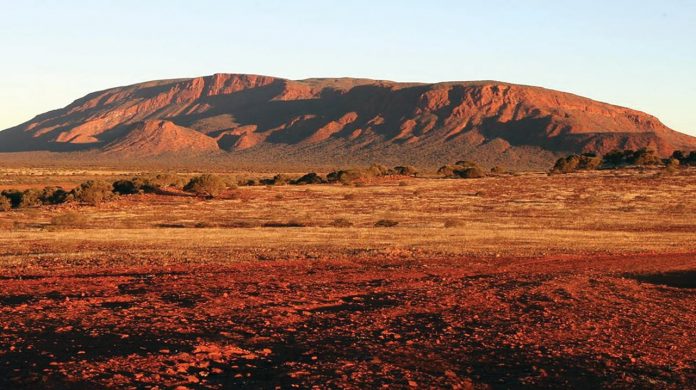Mt Augustus, one of the great wonders of the natural world, has been hiding in plain sight in one of the world’s greatest wildernesses in WA.
The world’s biggest monolith is also one of the world’s least-known, even on its home ground.
The world’s biggest rock is more than double that other great Aussie desert monolith, the mighty Uluru.
Mt Augustus is about 1,000kms north of Perth and that distance is a challenge for tourism operators. But it has also helped protect the rock from human interference.
Harry Shepherd, principal of WA family business Wildflower Safari Tours, says: “Few people realise that we have this massive, 1,600 million-year-old asymmetrical anticline.”
Harry has stepped up to face the challenge to guide tourists to this sacred place.
Harry’s company will run land tours to Mt Augustus during next month (August). It’s a journey unlike any other, a unique overland expedition to a special place.
Driving, while sight-seeing over two days, the first day’s travel reaches Murchison, about 680 kms north of Perth with 357kms to go of unique WA countryside and all it can throw up.
“On day two, we pass close by the Landor racecourse on Landor station,” Harry says.
“This year the race club celebrates its centenary over a five-day race meeting and gymkhana.”
The two-day sojourn at the rock involves donga-style accommodation with en suite.
Sightings can include emus, kangaroos, bustards, bungarras and small reptiles.
“At Cattle Pool on the Lyons River, a tributary of the Gascoyne River, permanent pools attract black cormorants, ibis, heron and ducks of differing types,” explains nature-loving Harry.
“In the surrounding trees are kookaburras, sacred kingfishers and corellas.”
Mt Augustus, or Burringurrah to Indigenous Wajarri people, is in its own National Park, created in 2000 when the State resumed Cobra and Waldburg pastoral leases and other surrounding areas.
The reserve covers 607,603ha with a 49km gravel road loop around the rock. Exploring on foot demands common sense – hats, stout foot-ware, collared shirts with sleeves and, crucially, several litres of water per person.
“Always travel in groups, never solo and leave a dated ‘home-by-time’ with a direction-of-travel memo, with a person at base or easily seen in a vehicle,” says Harry.
Harry points out that most of Mt Augustus is vegetated. Run-off water supports endemic wattles, cassias, gidgee and mulga which are liberally interspersed with native flowers in bloom.
“Groves of white barked river gums signify water seepage from the rock. Flora grow best in these patches, as will pigeons, crimson chafes, mulga parrots and babblers,” he says.
Day five of the journey sees the tour groups turning south. Nothing is set in stone on Harry’s trips and, with detours often thrown in along the track, this adds to the variety and excitement.
“The up-front plan is back to Murchison followed by Mullewa and then a conference with our travellers to determine our route for the last leg back to Perth. One possibility is south via Coalseam Conservation Area to check out the stage of development of the year’s everlastings and likely sightings of spider orchids,” he said.
Consultation with guests and built-in flexibility are key points of Harry’s journey.
“We Know Because We Go” is his motto. And guests eat well with Harry who’s a deft camp cook.
“At the end of trips we want to feel that our guests are well satisfied and leave us as new friends rather than just passengers. We don’t have a big budget for advertising, so word of mouth recommendations have value beyond measure,” he said.
Wildflower Safari is at www.wildflowersafaris.com.au or phone for a friendly chat with Harry on 0407 085 097.





























